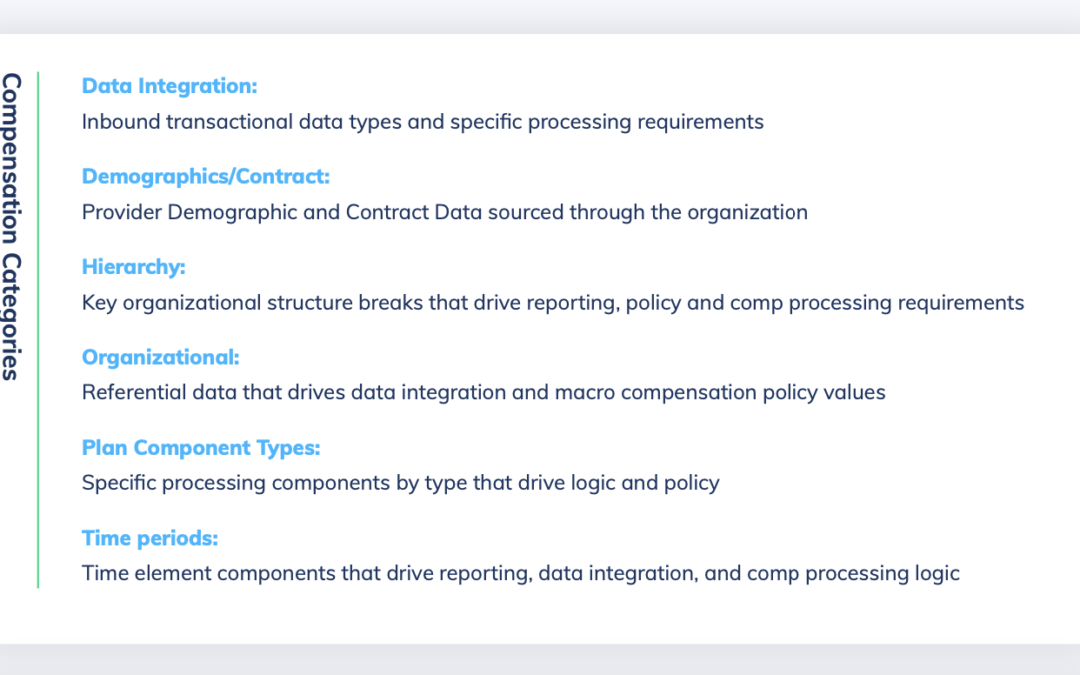With the ProCARE team’s experience in healthcare operations and incentive compensation management, the decision to create a provider compensation automation solution – with a rules-based engine – that addressed the needs of enterprise clients was an easy one.
They knew that only optimizing and/or simplifying compensation models would not suffice. Healthcare organizations needed a solution that could automate, adapt and flex with the ever-changing provider compensation landscape and unique variances within each organization.
And from that realization, ProCARE’s rules-based engine was born.
While developing a solution built on a rules-based engine was a no brainer, creating it took quite the investment.
“Jack and I spent hundreds of hours of conversation about where healthcare was going, and how organizations would need to handle not only productivity models, but value. We knew these value-based models would only increase in complexity, and a rules-based engine was the only way to go,” shares Matt BonDurant, ProCARE’s Managing Partner.
“It was no small feat, as you can imagine, to actually build a rules-based engine that could deliver what our clients would need,” Jack Liu, ProCARE’s Founder and Managing Partner shares, “if we didn’t spend nearly two years building the rules engine, we could have hit the market much sooner doing what our competitors were doing. But unlike other solutions, we wanted to offer true scalability, transparency and control of the data.”
In order to provide a completely customizable compensation automation solution that provides clients with the flexibility for any variance or rule required within their compensation models, ProCARE created the industry’s first and only rules-based compensation automation solution.
What is a “rules-based engine”?
At a high level, a rules-based engine starts with a conceptual framework, constructed so there are cascading dependencies across many phases.
There are two types of compensation automation solutions – the majority of solutions are built upon a ‘calculation engine’, not a ‘rules-based engine’.
The difference between a calculation engine and a rules-based engine
There is a subtle but powerful difference between the ‘calculation engines’ of competing solutions and the ‘rules-based engine’ of ProCARE. With a calculation engine, all of the logic is custom created by the automation provider to encapsulate all of the business rules from clients and calculate the compensation for them. In these cases, if you need to make a change on a rate, for example, you need to go back to the provider’s tech team to change the coding of the calculation engine.
With a rules-based engine, there is a fully user-configurable rules-based logic component that drives the calculations. This flexibility in the underlying framework of the ProCARE solution allows for any variance in payments or calculations to be accommodated and managed by the end users – rather than resorting to patch work or layers of custom work within the system.
“A rules engine is meant to provide the framework for anyone to go in and configure the rules in a logical, systematic sense to achieve the results they need without having to go in and do any programming or custom coding,” explains Liu, “which is what we knew our enterprise clients needed to successfully scale.”
ProCARE’s Rules Framework
Our rules-based approach consists of a series of inputs and outputs throughout a cascading framework that give you intermediary results. The four-phased approach allows users to follow the steps of how each complex calculation is processed and how the final result is achieved.
Phase One: Credit Allocation
Phase Two: Measurements
Phase Three: Incentives
Phase Four: Payments
All of the relationships between these intermediary data points are maintained throughout the system from the very beginning to the final answer. This approach provides transparency and traceability of all of our client’s data, with the utmost control over the process.
The benefits of a rules-based engine in compensation management
It’s common with ‘calculation engine’ automation to lose some control over what you can do because the system can be a black box. You’re throwing in all of these inputs and getting your output, but you don’t know how it’s calculated, or have control over what’s going on in the middle.
With the rules-based engine, you have transparency and transferability of data, and as a result, the ability to maintain complete control throughout the entire process. Every phase is user-configurable and even the phases themselves can be altered if needed.
This type of compensation automation is a comprehensive solution addressing pain points of all individuals involved with their healthcare organization’s compensation. You’re automating numerous time-consuming, manual and error-prone processes while maintaining transparency and control.
Powerful user-configurable rules
Most enterprise healthcare organizations’ compensation management systems require highly nuanced calculations such as contract year-to-date with varying contract terms and proration. ProCARE’s system can handle those calculations through rules.
While virtually any rule can be created within the ProCARE system, three of the most commonly used rules include:
1. Contract Terms or Proration to allow for any variations or exceptions between different groups or providers.
2. Rolling Periods and Internal Benchmarking for any kind of relative time aggregations – rolling 12 months, prior 6 months, etc – to optimize production for benchmarking and projecting out monthly averages.
3. Custom Tables are a highly utilized element with many of ProCARE’s clients. While a simple concept, it is difficult to create a framework where the end-user can create a table that contains any and all data required to support compensation. ProCARE’s rules-based approach has solved this problem by conceptualizing custom tables. “We can create any number of tables of any size and visualize them with the rules engine process to do lookups, data translations, and cross-referencing. This is very powerful, and in some ways a technical marvel that really benefits our clients,” explains Liu.
The Future of Healthcare
Forward-thinking organizations are exploring these types of solutions to position their companies for success. In an increasingly value-based world, existing compensation systems fall short of addressing all of the needs of enterprise organizations. A rules-based compensation automation system is a solution that not only addresses the needs of organizations today, it can scale and adapt to address the needs of organizations decades from now.
Eliminate the burden of manual processes, human errors and disparate data.
Get started today with an Introductory Call with ProCARE’s compensation management solution experts. During this quick 15-20 minute conversation, we will define your primary comp management challenges and identify solutions to automate and optimize your processes.










